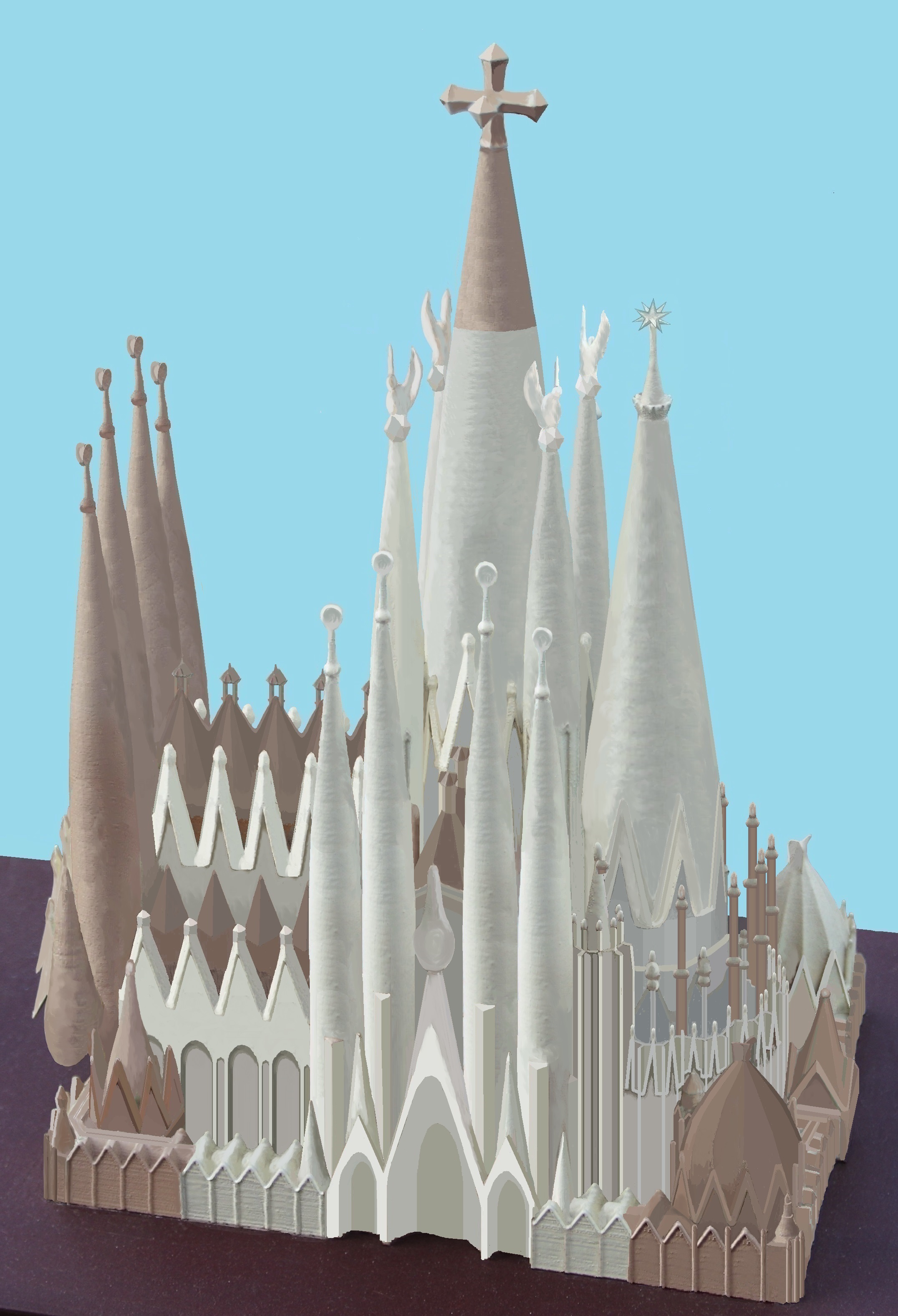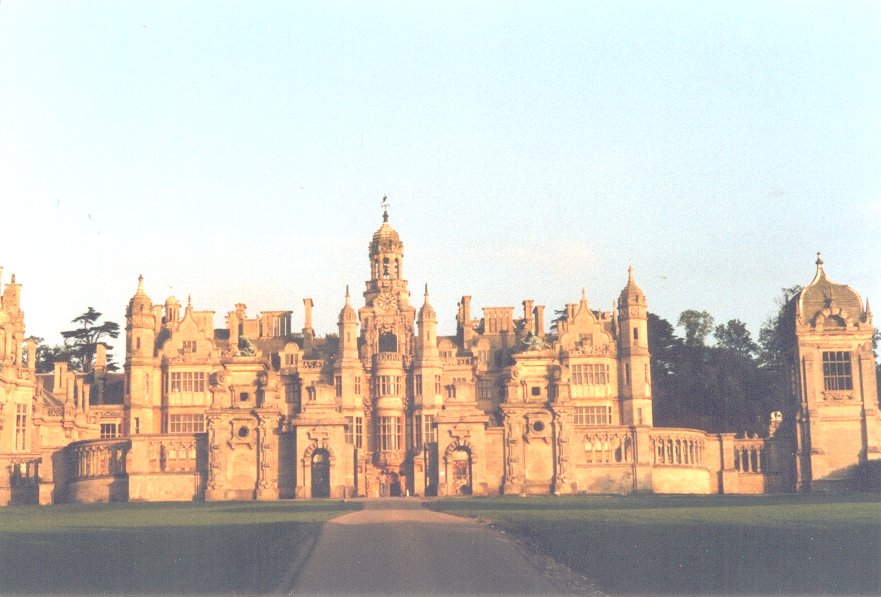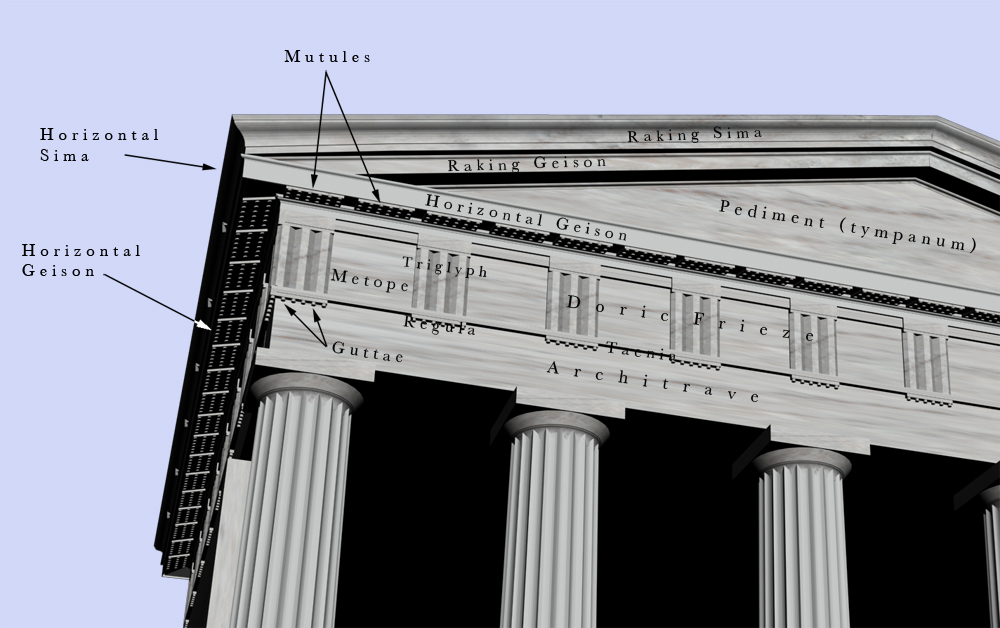|
Eclecticism In Architecture
Eclecticism in architecture is a 19th and 20th century architectural style in which a single piece of work incorporates eclecticism, a mixture of elements from previous historical styles to create something that is new and original. In architecture and interior design, these elements may include structural features, furniture, decorative motives, distinct historical ornament, traditional cultural motifs or styles from other countries, with the mixture usually chosen based on its suitability to the project and overall aesthetic value. The term is also used of the many architects of the 19th and early 20th centuries who designed buildings in a variety of styles according to the wishes of their clients, or their own. The styles were typically revivalist, and each building might be mostly or entirely consistent within the style selected, or itself an eclectic mixture. Gothic Revival architecture, especially in churches, was most likely to strive for a relatively "pure" reviv ... [...More Info...] [...Related Items...] OR: [Wikipedia] [Google] [Baidu] |
Sagrada Família
The Basílica i Temple Expiatori de la Sagrada Família, shortened as the Sagrada Família, is an unfinished church in the Eixample district of Barcelona, Catalonia, Spain. It is the largest unfinished Catholic church in the world. Designed by the Catalan architect Antoni Gaudí (1852–1926), his work on Sagrada Família is part of a UNESCO World Heritage Site. On 7 November 2010, Pope Benedict XVI consecrated the church and proclaimed it a minor basilica. On 19 March 1882, construction of the Sagrada Família began under architect Francisco de Paula del Villar. In 1883, when Villar resigned, Gaudí took over as chief architect, transforming the project with his architectural and engineering style, combining Gothic and curvilinear Art Nouveau forms. Gaudí devoted the remainder of his life to the project, and he is buried in the church's crypt. At the time of his death in 1926, less than a quarter of the project was complete. Relying solely on private donations, the Sag ... [...More Info...] [...Related Items...] OR: [Wikipedia] [Google] [Baidu] |
Jacobethan
The Jacobethan or Jacobean Revival architectural style is the mixed national Renaissance revival style that was made popular in England from the late 1820s, which derived most of its inspiration and its repertory from the English Renaissance (1550–1625), with elements of Elizabethan and Jacobean. John Betjeman coined the term "Jacobethan" in 1933, and described it as follows: The style in which the Gothic predominates may be called, inaccurately enough, Elizabethan, and the style in which the classical predominates over the Gothic, equally inaccurately, may be called Jacobean. To save the time of those who do not wish to distinguish between these periods of architectural uncertainty, I will henceforward use the term "Jacobethan". The term caught on with art historians. Timothy Mowl asserts in ''The Elizabethan and Jacobean Style'' (2001) that the Jacobethan style represents the last outpouring of an authentically native genius that was stifled by slavish adherence to Europ ... [...More Info...] [...Related Items...] OR: [Wikipedia] [Google] [Baidu] |
São Paulo
São Paulo (, ; Portuguese for 'Saint Paul') is the most populous city in Brazil, and is the capital of the state of São Paulo, the most populous and wealthiest Brazilian state, located in the country's Southeast Region. Listed by the GaWC as an alpha global city, São Paulo is the most populous city proper in the Americas, the Western Hemisphere and the Southern Hemisphere, as well as the world's 4th largest city proper by population. Additionally, São Paulo is the largest Portuguese-speaking city in the world. It exerts strong international influences in commerce, finance, arts and entertainment. The city's name honors the Apostle, Saint Paul of Tarsus. The city's metropolitan area, the Greater São Paulo, ranks as the most populous in Brazil and the 12th most populous on Earth. The process of conurbation between the metropolitan areas around the Greater São Paulo (Campinas, Santos, Jundiaí, Sorocaba and São José dos Campos) created the São Paulo Macrometr ... [...More Info...] [...Related Items...] OR: [Wikipedia] [Google] [Baidu] |
Palácio Das Indústrias
The Palácio das Indústrias is a historical building in São Paulo, under the protection of the Council for the Defense of Historical, Archaeological, Artistic and Tourist Heritage (CONDEPHAAT). It was designed by in conjunction with Ramos de Azevedo and and is located in the . It is a representative of the Eclectic style and was designed for hosting industrial exhibitions. The first exhibition was held there in 1917. It was converted into a legislative assembly in 1947 and its name was changed to the "Palácio Nove de Julho" (Ninth of July, commemorating the Constitutionalist Revolution). In the 1970s, it also served as the home of the Public Security Secretariat and contained some jail cells. In 1992, after restorations by the architect Lina Bo Bardi Lina Bo Bardi, born Achillina Bo (5 December 1914 – 20 March 1992), was an Italian-born Brazilian modernist architect. A prolific architect and designer, she devoted her working life, most of it spent in Brazil, to promot ... [...More Info...] [...Related Items...] OR: [Wikipedia] [Google] [Baidu] |
New World Queen Anne Revival Architecture
In the New World, Queen Anne Revival was a historicist architectural style of the late 19th and early 20th centuries. It was popular in the United States, Canada, Australia, and other countries. In Australia, it is also called Federation architecture. United States In the United States, Queen Anne Revival architecture was popular from roughly 1880 to 1910. "Queen Anne" was one of a number of popular architectural styles to emerge during the Victorian era. Within the Victorian era timeline, Queen Anne style followed the Stick style and preceded the Richardsonian Romanesque and Shingle styles. The style bears almost no relationship to the English Baroque architecture produced in the actual reign of Queen Anne from 1702 to 1714. It is loosely used of a wide range of picturesque buildings with "free Renaissance" (non-Gothic Revival) details rather than of a specific formulaic style in its own right. "Queen Anne", as an alternative both to the French-derived Second Empire and t ... [...More Info...] [...Related Items...] OR: [Wikipedia] [Google] [Baidu] |
Eureka, California
Eureka (Wiyot: ''Jaroujiji'', Hupa: ''do'-wi-lotl-ding'', Karuk: ''uuth'') is the principal city and county seat of Humboldt County in the Redwood Empire region of California. The city is located on U.S. Route 101 on the shores of Humboldt Bay, north of San Francisco and south of the Oregon border. At the 2010 census, the population of the city was 27,191, and the population of Greater Eureka was 45,034. Eureka is the largest coastal city between San Francisco and Portland, Oregon, and the westernmost city of more than 25,000 residents in the 48 contiguous states.Eureka (city), California , State & County QuickFacts, January 10, 2013, note: in data set The proximity to the sea causes the city to have an extremely maritime clim ... [...More Info...] [...Related Items...] OR: [Wikipedia] [Google] [Baidu] |
Carson Mansion
The Carson Mansion is a large Victorian house located in Old Town, Eureka, California. Regarded as one of the premier examples of Queen Anne style architecture in the United States, the house is "considered the most grand Victorian home in America." It is one of the most written about and photographed Victorian houses in California and possibly also in the United States. About Originally the home of William Carson, one of Northern California's first major lumber barons, it has been a private club since 1950. The house and grounds are not open to the public. It currently is owned and occupied by the Ingomar Club. Carson family history William Coleman Carson (July 15, 1825 New Brunswick – February 20, 1912 Eureka), for whom the house was built, arrived in San Francisco from New Brunswick, Canada, with a group of other woodsmen in 1849. After rolling out gold slugs in San Francisco, they joined in the northern gold rush, arriving in the Trinity Mountains via the Eel River a ... [...More Info...] [...Related Items...] OR: [Wikipedia] [Google] [Baidu] |
Church Of St
Church may refer to: Religion * Church (building), a building for Christian religious activities * Church (congregation), a local congregation of a Christian denomination * Church service, a formalized period of Christian communal worship * Christian denomination, a Christian organization with distinct doctrine and practice * Christian Church, either the collective body of all Christian believers, or early Christianity Places United Kingdom * Church (Liverpool ward), a Liverpool City Council ward * Church (Reading ward), a Reading Borough Council ward * Church (Sefton ward), a Metropolitan Borough of Sefton ward * Church, Lancashire, England United States * Church, Iowa, an unincorporated community * Church Lake, a lake in Minnesota Arts, entertainment, and media * '' Church magazine'', a pastoral theology magazine published by the National Pastoral Life Center Fictional entities * Church (''Red vs. Blue''), a fictional character in the video web series ''Red vs. Blue'' ... [...More Info...] [...Related Items...] OR: [Wikipedia] [Google] [Baidu] |
Guttae
A gutta (Latin pl. guttae, "drops") is a small water-repelling, cone-shaped projection used near the top of the architrave of the Doric order in classical architecture. At the top of the architrave blocks, a row of six ''guttae'' below the narrow projection of the taenia (fillet) formed an element called a regula. A ''regula'' was aligned under each triglyph of the Doric frieze. In addition, the underside of the projecting geison above the frieze had rectangular protrusions termed ''mutules'' that each had three rows of six ''guttae''. These mutules were aligned above each triglyph and each metope. It is thought that the guttae were a skeuomorphic representation of the pegs used in the construction of the wooden structures that preceded the familiar Greek architecture in stone. However, they have some functionality, as water drips over the edges, away from the edge of the building. Outside the Doric In the strict tradition of classical architecture, a set of guttae always ... [...More Info...] [...Related Items...] OR: [Wikipedia] [Google] [Baidu] |
Lille Synagogue
Lille ( , ; nl, Rijsel ; pcd, Lile; vls, Rysel) is a city in the northern part of France, in French Flanders. On the river Deûle, near France's border with Belgium, it is the capital of the Hauts-de-France region, the prefecture of the Nord department, and the main city of the European Metropolis of Lille. The city of Lille proper had a population of 234,475 in 2019 within its small municipal territory of , but together with its French suburbs and exurbs the Lille metropolitan area (French part only), which extends over , had a population of 1,510,079 that same year (Jan. 2019 census), the fourth most populated in France after Paris, Lyon, and Marseille. The city of Lille and 94 suburban French municipalities have formed since 2015 the European Metropolis of Lille, an indirectly elected metropolitan authority now in charge of wider metropolitan issues, with a population of 1,179,050 at the Jan. 2019 census. More broadly, Lille belongs to a vast conurbation forme ... [...More Info...] [...Related Items...] OR: [Wikipedia] [Google] [Baidu] |
Nostalgia
Nostalgia is a sentimentality for the past, typically for a period or place with happy personal associations. The word ''nostalgia'' is a learned formation of a Greek language, Greek compound, consisting of (''nóstos''), meaning "homecoming", a Homeric word, and (''álgos''), meaning "sorrow" or "despair", and was coined by a 17th-century medical student to describe the anxieties displayed by Swiss mercenaries fighting away from home. Described as a medical condition—a form of Depression (mood), melancholy—in the Early Modern period, it became an important Trope (literature), trope in Romanticism. Nostalgia is associated with a longing for the past, its personalities, possibilities, and events, especially the "Good old days, good ol' days" or a "warm childhood". There is a predisposition, caused by cognitive biases such as rosy retrospection, for people to view the past more favourably and future more negatively. When applied to one's beliefs about a society or institutio ... [...More Info...] [...Related Items...] OR: [Wikipedia] [Google] [Baidu] |
Revivalism (architecture)
Revivalism in architecture is the use of visual styles that consciously echo the style of a Architectural style, previous architectural era. Notable revival styles include Neoclassical architecture (a revival of Classical architecture), and Gothic Revival architecture, Gothic Revival (a revival of Gothic architecture). Revivalism is related to Historicism (art), historicism. Architecture produced during the 19th century, including Victorian architecture, is especially associated with revivalism. History 19th-early 20th centuries The idea that architecture might represent the glory of kingdoms can be traced to the dawn of civilisation, but the notion that architecture can bear the stamp of national character is a modern idea, that appeared in the 18th century historical thinking and given political currency in the wake of the French Revolution. As the map of Europe was repeatedly changing, architecture was used to grant the aura of a glorious past to even the most recent nations. ... [...More Info...] [...Related Items...] OR: [Wikipedia] [Google] [Baidu] |







